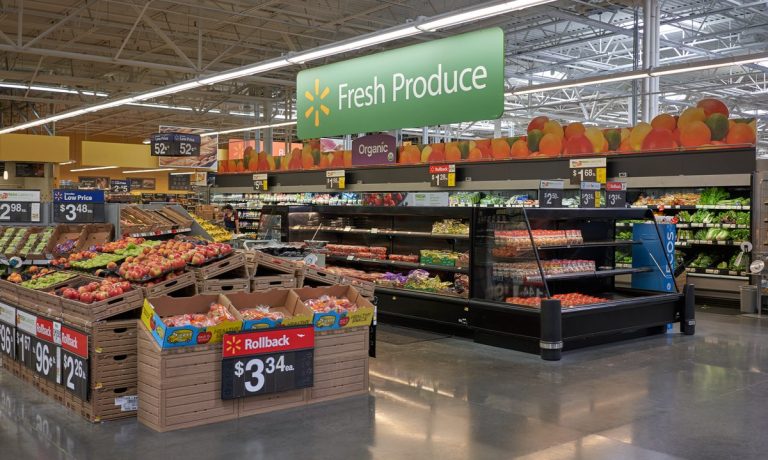Walmart Sees Shift to Private-Label Groceries Amid Rapid Food Inflation

For multiple quarters in a row, Walmart has been able to leverage inflation to its advantage when it comes to grocery, pricing out competitors. Now, even the world’s largest grocer is feeling the pressure of skyrocketing prices.
Read more: Walmart Parlays Consumer Price Concerns Into Grocery Share Gains
On a call with analysts Tuesday (May 17) discussing the company’s first-quarter earnings results, Walmart President and CEO Doug McMillon discussed the challenge that food inflation poses right now for the retailer.
See more: Walmart Sees Demand Shift for Low-Priced Bacon and High-Ticket Game Consoles
“While we’ve experienced high levels of inflation in our international markets over the years, U.S. inflation being this high and moving so quickly, both in food and general merchandise is unusual,” he said. “We’ll control what we can control, reduce our inventory level, and keep prices as low as we can, especially on opening price point food items, while improving our profit performance.”
Grocery prices continue to rise at an alarming rate. April’s Consumer Price Index for All Urban Consumers (CPI-U), reported by the U.S. Bureau of Labor Statistics (BLS) Wednesday (May 11), showed food at home (i.e., grocery) prices rose 1% month over month in April and 11% year over year. Not all items’ prices are inflating at the same rates, such that some foods are dramatically more expensive, while others are holding relatively constant.
Still, while inflation may be posing challenges, Walmart is better positioned than smaller companies to keep prices low, appealing to low-income consumers.
“Not all of them can afford to absorb this — that’s where they need our help,” McMillon said, adding that the company is focusing on the essential categories where it can keep prices low for those who are struggling to purchase food.
Additionally, Brett Biggs, the company’s executive vice president and chief financial officer, noted that these concerns are resulting in “an increase in grocery private brand penetration,” with consumers choosing lower price points over trusted brands. John Furner, the president and CEO of the company’s U.S. operations, added that this shift is especially pronounced in protein and dairy categories.
Along with inflationary challenges, many grocers are also struggling with supply chain issues, with out-of-stocks threatening shopper loyalty, according to data from PYMNTS’ January study, “Decoding Customer Affinity: The Customer Loyalty to Merchants Survey 2022,” created in collaboration with Toshiba Global Commerce Solutions.
Get the report: The Customer Loyalty to Merchants Survey 2022
The report, which drew from a survey of more than 2,000 United States consumers, noted that 51% of shoppers said ensuring that the grocery products they want are in stock and available for purchase is key to their continued patronage of a given merchant, and 6% of shoppers listed this factor as the single most influential driver of merchant selection for them.
Discussing the company’s grocery business, Furner noted that Walmart is “happier with our inventory levels versus where we have been in previous quarters.”